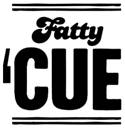After the first year of public displays of letter grades, 69 percent of New York City’s 24,000 restaurants had been issued an A, 15 percent a B and 4 percent a C; 12 percent had “grade pending” designations.
Susan Craig, a health-department spokeswoman told the New York Times the health department made 73,749 inspections with a corps of between 115 and 140 inspectors. Ms. Craig added that 39,000 restaurant supervisors had been trained in the department’s food-protection courses, 10,000 more .jpg) than in the previous year. And the department’s Web site, redesigned to make the tracking of letter-grade scores possible, attracted 74,000 cumulative page views from June 2010 to June 2011, experiencing a seven-fold increase in page views over the previous year.
than in the previous year. And the department’s Web site, redesigned to make the tracking of letter-grade scores possible, attracted 74,000 cumulative page views from June 2010 to June 2011, experiencing a seven-fold increase in page views over the previous year.
“We think this has been a great way for food establishments to make their customers know that food safety is important to them,” Ms. Craig said. “and that their patrons’ health is important to them as well.’’
The Wall Street Journal notes what food safety types have maintained for years: fast-food restaurants are among the city’s most sanitary places to eat.
In the past year, only 384 establishments citywide achieved a perfect score, meaning they avoided notching a single food safety violation during unannounced inspections by the city’s Department of Health and Mental Hygiene.
Chain restaurants dominated the list of 384 city restaurants that received zero points, including 21 Subways, 16 Starbucks and 10 McDonald’s.
"We pride ourselves on being proactive and for keeping food safety a top priority," emailed Steve Kerley, a McDonald’s vice president.
"There’s a myriad of things that have to be looked at," said Chris Beischer, the chef at Mercer Kitchen, which earned a perfect score on its most recent inspection. "We worked very, very hard and I actually learned quite a bit along the way about how to make my food safer."
Perfect scores go almost unnoticed publicly, though. Restaurants can rack up as many as 13 points and still earn an A grade, which diners see posted near the entrance. Establishments proudly displaying an A might still house rats or roaches (5 to 7 points), employ workers whose clothes are contaminated (5 to 7 points) or use banned chemicals (2 to 4 points), according to the Health Department.
According to an analysis of the Department of Health’s data by Metro, 73 percent of Staten Island’s graded restaurants earned an “A” — higher than the citywide average of 69 percent.
"There’s a game being played behind the letters," Jason Stevens, the owner of reBar in DUMBO, said. "I’ve never bribed an inspector — which is obvious, because I’ve never gotten an ‘A.’"
One city councilman wants food carts to start brandishing the conspicuous “A,” “B” and “C” grades.
City Councilman Daniel Garodnick has introduced legislation mandating food carts be subject to letter grading. The Department of Health found 2,517 violations so far this year on food carts, ranging from food being kept at the wrong temperature, a lack of hand washing by vendors to even live vermin.
“There should be no ambiguity as to whether the food you’re eating is safe and clean and free of vermin and other problems,” said Garodnick.
For those wondering about the whys of restaurant inspection disclosure, start with this review:
Filion, K. and Powell, D.A. 2009. The use of restaurant inspection disclosure systems as a means of communicating food safety information. Journal of Foodservice 20: 287-297.
Abstract
The World Health Organization estimates that up to 30% of individuals in developed countries become ill from food or water each year. Up to 70% of these illnesses are estimated to be linked to food prepared at foodservice establishments. Consumer confidence in the safety of food prepared in restaurants is fragile, varying significantly from year to year, with many consumers attributing foodborne illness to foodservice. One of the key drivers of restaurant choice is consumer perception of the hygiene of a restaurant. Restaurant hygiene information is something consumers desire, and when available, may use to make dining decisions.
 stored properly and food surfaces improperly washed. Also, the inspector found the supervisor of food operations did not hold a Food Protection Certificate, which is required by the health department.
stored properly and food surfaces improperly washed. Also, the inspector found the supervisor of food operations did not hold a Food Protection Certificate, which is required by the health department.
 Cambridge News reported today
Cambridge News reported today between cooked and raw meat, and poor hygiene among kitchen workers, the DOH website said.
between cooked and raw meat, and poor hygiene among kitchen workers, the DOH website said..jpg) Avenue pizzeria, at 11th Street.
Avenue pizzeria, at 11th Street. .png) preparation surfaces and not keeping cold foods cold enough, records show.
preparation surfaces and not keeping cold foods cold enough, records show.
.jpg) than in the previous year. And the department’s Web site, redesigned to make the tracking of letter-grade scores possible, attracted 74,000 cumulative page views from June 2010 to June 2011, experiencing a seven-fold increase in page views over the previous year.
than in the previous year. And the department’s Web site, redesigned to make the tracking of letter-grade scores possible, attracted 74,000 cumulative page views from June 2010 to June 2011, experiencing a seven-fold increase in page views over the previous year. .png) displayed signs. And many say the grades influence their decision whether to dine at an establishment.
displayed signs. And many say the grades influence their decision whether to dine at an establishment..jpg) establishments. Soon, the public will know at a glance how a restaurant, school cafeteria or other food service establishment fared in its most recent inspection.
establishments. Soon, the public will know at a glance how a restaurant, school cafeteria or other food service establishment fared in its most recent inspection. closed-down Popeyes.
closed-down Popeyes..jpg) department decided how to regulate the newfangled method. … Now restaurants desiring to use the sous vide method must have an approved HACCP plan to do so.”
department decided how to regulate the newfangled method. … Now restaurants desiring to use the sous vide method must have an approved HACCP plan to do so.” evidence of rats and mice. The report also cited “hand washing facility not provided in or near food preparation area and toilet room. Hot and cold running water at adequate pressure to enable cleanliness of employees not provided at facility. Soap and an acceptable hand-drying device not provided.”
evidence of rats and mice. The report also cited “hand washing facility not provided in or near food preparation area and toilet room. Hot and cold running water at adequate pressure to enable cleanliness of employees not provided at facility. Soap and an acceptable hand-drying device not provided.”  an A, from a liberal sprinkling in Chinatown to a true sanito-palooza of nine blue A placards in the food court at Grand Central Terminal.
an A, from a liberal sprinkling in Chinatown to a true sanito-palooza of nine blue A placards in the food court at Grand Central Terminal. as a C.
as a C.